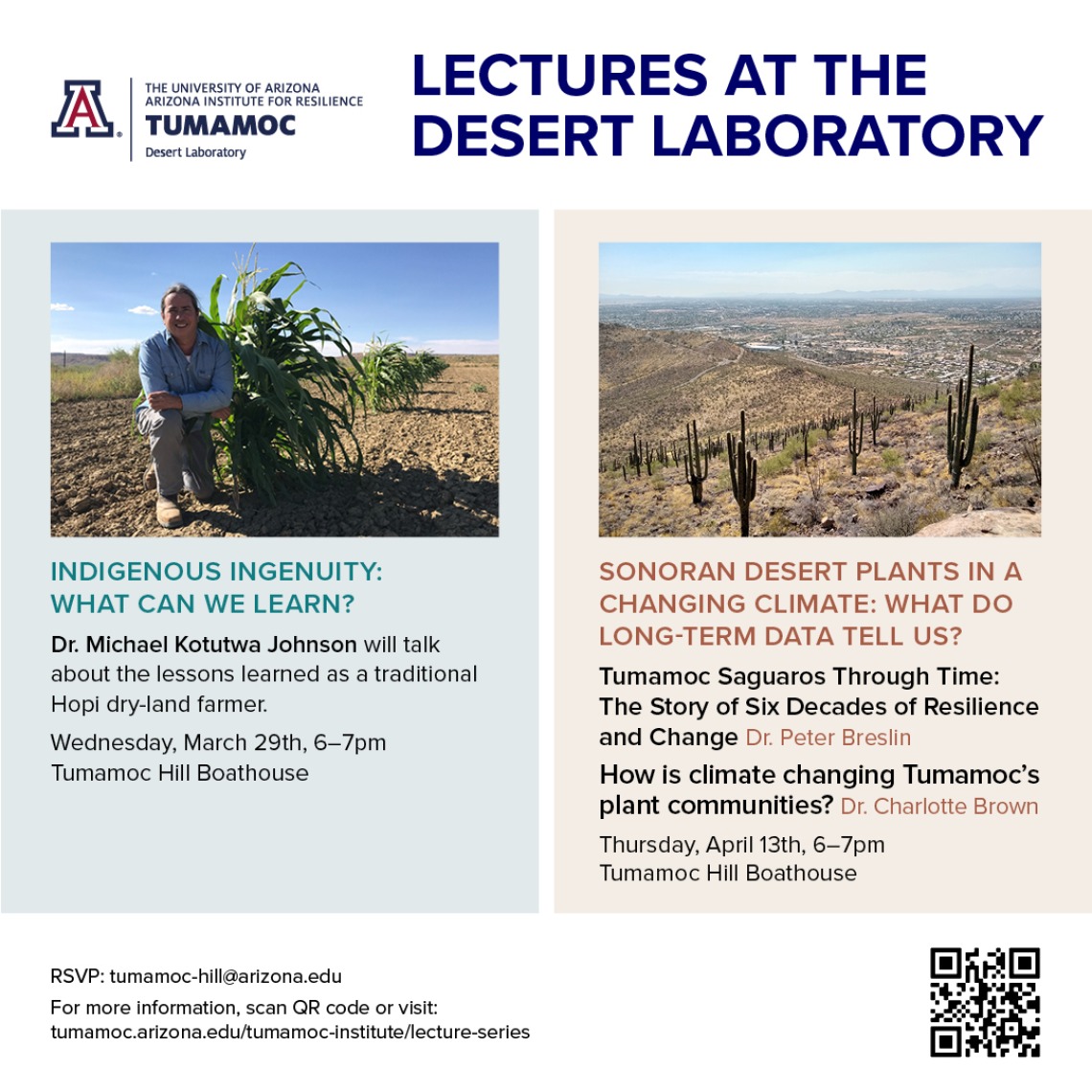Image

About our Presenters:
- Dr. Michael Kotutwa Johnson, is a member of the Hopi Tribe. Dr. Johnson is an Assistant Specialist- from the University of Arizona (UofA) within the School of Natural Resources and the Environment and is also affiliated with the UofA’s Indigenous Resilience Center and Cooperative Extension. Dr. Johnson is also a co-author of the Indigenous Chapter in the National Climate Assessment Five and peer-reviewed journal and feature articles. He continues to practice Hopi dry farming, a practice of his people for millennia. Visit Dr. Johnson's Instagram page and his profile with the Indigenous Resilience Center at the University of Arizona.
- Dr. Peter Breslin, Staff Researcher at the Desert Laboratory on Tumamoc Hill started his Ph.D. in Environmental Life Sciences at Arizona State University in 2014 after a 30-year career teaching secondary school. He finished the Ph.D. in 2020. His Ph.D. research involved the evolution, ancestral biogeography, and population viability of a group of cacti called the Mammilloid Clade, composed of plants commonly called "pincushions" and "fishhooks," including the locally common Cochemiea grahamii (formerly in Mammillaria). He has published three greatly revised chapters of his dissertation, in Ecology and Evolution, Taxon, and the American Journal of Botany. He is also the editor of The Cactus and Succulent Journal and the peer-reviewed annual, Haseltonia, published by The Cactus and Succulent Society of America. On Tumamoc Hill, Breslin is a postdoctoral researcher conducting the decadal survey of the saguaro plots set up in 1964 by Rod Hastings and Ray Turner. He hopes to use this extraordinary long-term data set, as well as data from the National Park Service and researchers in Mexico, to make projections about the future of the saguaro over the next 100 to 200 years.
- Dr. Charlotte Brown is a plant and community ecologist who uses experimental and analytical methods to examine the mechanisms of community assembly, species interactions, and diversity. Dr. Brown spent ten years in Canada conducting research and obtaining a B.Sc. (Dalhousie University) and
Ph.D. (University of Alberta).

